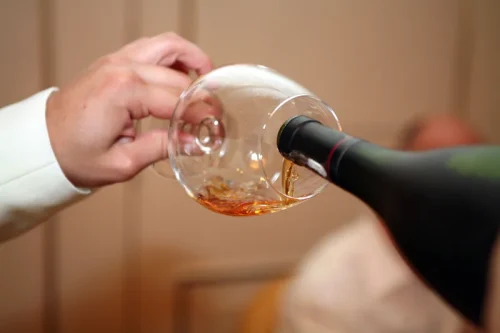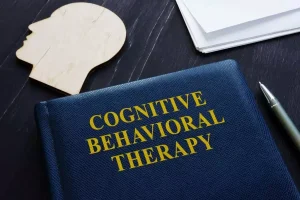Some supplements, such as valerian and melatonin, might also help you get some relief from your symptoms, but research has found mixed results. You can call 988 to reach the Suicide and Crisis Helpline and get compassionate, confidential support severe benzodiazepine withdrawal syndrome from trained crisis counselors. When benzodiazepines attach to your neurons, they invite a bunch of chloride ions inside. These ions change the neuron’s electrical charge, so it has to work much harder to activate and send signals.
What makes benzodiazepine withdrawal so dangerous?

In other words, your body may rely on benzodiazepines to function if you take them frequently and for more than a short period of time. Short-acting benzodiazepines, like triazolam, pass quickly through the body, so you’ll likely experience withdrawal symptoms sooner — sometimes within a matter of hours. These factors don’t guarantee you’ll have severe withdrawal symptoms, but they can increase your vulnerability. So, your doctor may recommend a slower taper schedule as a safety precaution. In addition, over half of the survey respondents said benzodiazepines’ side effects or withdrawal symptoms caused them to consider suicide. If you take benzodiazepines infrequently, such as once a week or once every few weeks to treat panic attacks, you can take them for a longer period of time.

How to get support for thoughts of suicide

If you experience severe withdrawal symptoms during tapering, tell your doctor so they can adjust your care plan as needed. People with benzodiazepine tolerance may take supratherapeutic doses because the recommended range no longer provides relief for their symptoms. The higher dose may help ease your symptoms, but it can also increase your risk of overdose and severe withdrawal symptoms. While they can quickly relieve symptoms of anxiety and panic, these drugs pose a high risk of dependence.
Short-term symptoms
- People with benzodiazepine tolerance may take supratherapeutic doses because the recommended range no longer provides relief for their symptoms.
- In most cases, your doctor will reduce your dosage by 5% to 25% in the first week.
- If you experience severe withdrawal symptoms during tapering, tell your doctor so they can adjust your care plan as needed.
- In other words, your body may rely on benzodiazepines to function if you take them frequently and for more than a short period of time.
In most cases, your doctor will reduce your dosage by 5% to 25% in the first week. Every 1 to 4 weeks after that, they’ll reduce your dose by another 5% to 25% of the original dose. In addition to the immediate health risk, benzodiazepine withdrawal can seriously affect your quality of life. Emerging research also suggests acceptance and commitment therapy (ACT) could also have benefits during benzodiazepine withdrawal. This approach helps you learn to tolerate discomfort and distress, instead of avoiding it, and choose to live according to your values. According to the National Center for PTSD, the most beneficial kind of therapy for benzodiazepine withdrawal is cognitive behavioral therapy (CBT).
- That’s what makes it essential to stop taking benzodiazepines slowly, with support from a medical professional.
- This approach helps you learn to tolerate discomfort and distress, instead of avoiding it, and choose to live according to your values.
- This is because inconsistent use doesn’t pose the same risk of dependence or withdrawal.
- In addition to the immediate health risk, benzodiazepine withdrawal can seriously affect your quality of life.
- When benzodiazepines attach to your neurons, they invite a bunch of chloride ions inside.
- These factors don’t guarantee you’ll have severe withdrawal symptoms, but they can increase your vulnerability.

Benzodiazepines are a powerful class of medication used to treat anxiety, insomnia, and panic disorder. Examples of benzodiazepines include alprazolam (Xanax) and diazepam (Valium). Though therapy generally can’t address withdrawal symptoms specifically, it can help improve some symptoms, like anxiety and insomnia. If you experience unpleasant withdrawal symptoms during your taper, your care team can help you explore options to address those symptoms and get relief. The 2022 survey mentioned above also asked respondents to what extent withdrawal symptoms affected their lives. They could rate each problem as nonexistent, mild, moderate, severe, quite severe, or enormous.
Tapering changes
Experiencing rebound symptoms means the symptoms you had before taking benzodiazepines come back even stronger than before. If you take an intermediate-acting benzodiazepine, like alprazolam, or a long-acting benzodiazepine, like diazepam, it may take longer for withdrawal symptoms to appear. Read on to learn more about benzodiazepine withdrawal, including the signs, how long it lasts, and how to get support with tapering off safely. In the first week of tapering off, your doctor may reduce your dose as much as 30% to get you to a safe amount. After that first leap, the steps become smaller, usually 5% to 10% of the original dose. Depending on your situation, your doctor may reduce your dose on a monthly, weekly, or even daily basis.
- People tapering off the same original dosage of medication can have drastically different tapering experiences.
- According to the National Center for PTSD, the most beneficial kind of therapy for benzodiazepine withdrawal is cognitive behavioral therapy (CBT).
- While they can quickly relieve symptoms of anxiety and panic, these drugs pose a high risk of dependence.
- Depending on your situation, your doctor may reduce your dose on a monthly, weekly, or even daily basis.
Among respondents whose symptoms lasted months or years, over half said caffeine or alcohol worsened their PAWS symptoms. Dependence and withdrawal can happen to anyone, even if you take your medication exactly as instructed.
Difficult tapers
This is because inconsistent use doesn’t pose the same risk of dependence or withdrawal. For example, say you’re tapering off a dose of 20 milligrams (mg) of diazepam (Valium). A very quick taper would involve reducing the dose by 5 mg (25%) each week. Short-acting benzodiazepines are much more likely to cause rebound symptoms.
